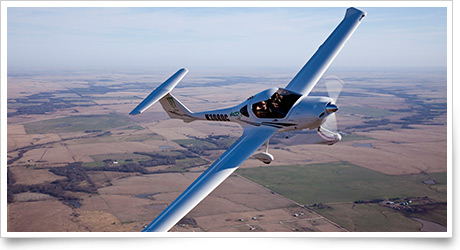Custom content for the Feb. 22, 2013, issue of 'AOPA ePilot' newsletter
| The following stories from the Feb. 22, 2013, edition of AOPA ePilot were provided to AOPA members who expressed an interest in the particular subject areas. Any AOPA member can receive information tailored to their areas of interest by updating their preferences online. |
training tipsToo much bank
“Turn right turn to a heading of 090 degrees, please,” requests the flight instructor, playing the role of designated examiner on this prep flight for a private pilot checkride.
The student complies. But as the airplane’s nose, positioned well above the horizon during the high-angle-of-attack exercise, reluctantly swings right, a shudder is felt through the control yoke, the stall horn’s steady tone becomes a wail, and suddenly the aircraft has sunk 100 feet before a recovery can be executed.
What happened?
“Too much bank,” your instructor explains.
It wasn’t much, but it was still too much.
When flying level at an angle of attack that is almost critical, turning may be almost too much to ask of your trainer, because there is hardly any lift available to be directed horizontally to accomplish a turn.
Even knowing this, a student pilot who has recently been practicing more aggressive maneuvers at normal operating speeds may need—or may get—a reminder of how shallow a turn at low airspeed must be to avoid an approach to a stall (or more). Right turns complicate the issue because the single-engine aircraft’s natural tendency is to turn left—with the effect most pronounced at speeds below cruise (because at cruise airspeeds design factors partly neutralize left-turning tendency).
When practicing for a checkride, be sure that you are performing any maneuver to the practical test standard—in this case requiring that you establish and maintain “an airspeed at which any further increase in angle of attack, increase in load factor, or reduction in power, would result in an immediate stall.”
The recommended technique demands more of you than just rolling into a shallow turn: “During the turns, power and pitch attitude may need to be increased to maintain the airspeed and altitude. The objective is to acquaint the pilot with the lack of maneuverability at minimum speeds, the danger of incipient stalls, and the tendency of the airplane to stall as the bank is increased,” explains Chapter 4 of the Airplane Flying Handbook. training productsThe Air Safety Institute has free runway safety flash cards available for pilots. The cards help pilots better understand runway signage and markings. The front of each card displays an airport sign or pavement marking, while the back provides a description and information on the required pilot action. The cards are available through a grant from the FAA Office of Runway Safety.
Jeppesen has released its Private Pilot Airmen Knowledge Test Guide . Students can supplement their studying with this test guide that comes loaded with all of the FAA recreational and private pilot airplane knowledge test questions, along with the correct answers, detailed explanations, and study references.
Note: Products listed have not been evaluated by ePilot editors unless otherwise noted. AOPA assumes no responsibility for products or services listed or for claims or actions by manufacturers or vendors. final examQuestion: What is the purpose of circuit breakers in airplanes?
Answer: According to the Pilot’s Handbook of Aeronautical Knowledge, “Fuses or circuit breakers are used in the electrical system to protect the circuits and equipment from electrical overload.” Circuit breakers are commonly found on newer airplanes because of their ease of use and cost effectiveness since they can be reset and re-used. If you pull a circuit breaker, that piece of equipment should shut off, and then turn back on once you push it back in. Think of it like a switch that is there to protect the system from overload or to shut off a piece of equipment that is faulty (runaway electric trim, autopilot, etc.). A circuit breaker is a wise choice in protecting the electrical circuitry in a given system—a much better alternative than potentially ruining certain electrical equipment or wiring—and doesn’t require having spare fuses handy. In a worst-case scenario, an overloaded circuit could potentially start an electrical fire. If a circuit breaker pops, it’s a wise idea to have a mechanic inspect the system as soon as practicable. Read more about aircraft electrical systems in the FAA’s Pilot’s Handbook of Aeronautical Knowledge .
Got a question for our technical services staff? Email [email protected] or call the Pilot Information Center, 800/872-2672. Don’t forget the online archive of “Final Exam” questions and answers, searchable by keyword or topic. |
 A student pilot is flying a trainer at minimum controllable airspeed, working hard to maintain heading and altitude despite the aircraft’s sluggish response to control inputs and the aggravatingly strong influence of
A student pilot is flying a trainer at minimum controllable airspeed, working hard to maintain heading and altitude despite the aircraft’s sluggish response to control inputs and the aggravatingly strong influence of 

